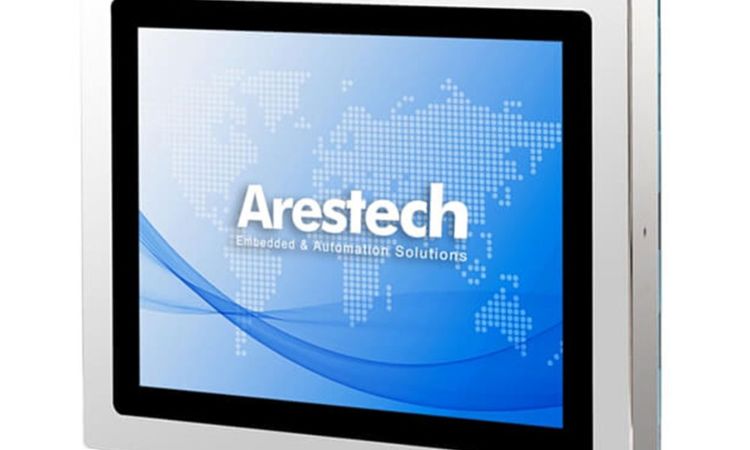The global industrial display market size reached a value of about USD 6.49 billion in 2023. The industry is further expected to grow at a CAGR of 5.87% in the forecast period of 2024-2032 to reach a value of nearly USD 10.85 billion by 2032. As industrial sectors evolve and digitization continues to transform the way businesses operate, the demand for advanced display solutions has surged. From interactive touchscreens in manufacturing to digital signage in retail, industrial displays have become indispensable across various sectors. This blog post will explore the types, applications, and regional trends in the industrial display market, providing insights into the key drivers and challenges that will shape its future growth.
What is the Industrial Display Market?
Industrial displays refer to screens used in industrial environments, designed to perform in harsh conditions such as extreme temperatures, high humidity, and vibrations. These displays offer features like high brightness, durability, and clear resolution, ensuring they function reliably for critical applications. They are commonly used in applications like human-machine interfaces (HMI), digital signage, remote monitoring, and interactive displays, playing a key role in improving operational efficiency and customer engagement across various industries.
The rapid growth of the industrial display market can be attributed to the increasing adoption of automation in manufacturing, advancements in display technologies, and the rising demand for real-time information processing across sectors like transportation, healthcare, retail, and logistics.
Market Segmentation: Types of Industrial Displays
The industrial display market can be segmented into various categories based on type, application, technology, and panel size. Each type serves a specific function within different industries, contributing to the growth of the market.
By Type
- Rugged Displays: Rugged displays are designed to withstand harsh environments, including extreme temperatures, vibrations, and exposure to dust and moisture. These displays are particularly common in sectors like manufacturing, oil and gas, and mining, where equipment is exposed to demanding conditions.
- Open Frame Monitors: Open frame monitors are typically used in kiosks, vending machines, and embedded systems. These displays are highly customizable, allowing businesses to integrate them into various applications for different functionalities.
- Panel Mount Monitors: Panel mount monitors are integrated into machinery or control panels for factory automation. These displays are often used in control rooms or assembly lines where real-time monitoring and system interactions are necessary.
- Marine Displays: Marine displays are specialized monitors built for use in maritime environments. These displays are designed to resist the corrosive effects of saltwater and are used for navigation, communication, and monitoring on ships and offshore platforms.
- Video Walls: Video walls consist of multiple large-screen displays that form a single large surface for visual communication. These are increasingly used in control rooms, transportation hubs, and retail spaces for managing complex data streams and delivering impactful visual experiences.
By Application
- HMI (Human-Machine Interface): HMIs play a critical role in manufacturing environments by enabling operators to interact with machines and control processes in real-time. Industrial displays used in HMI applications help streamline operations and improve productivity.
- Remote Monitoring: As industries embrace remote monitoring systems, industrial displays are key in ensuring real-time data visualization for asset management, performance tracking, and predictive maintenance in industries like oil and gas, utilities, and manufacturing.
- Interactive Displays: Interactive displays enable businesses to engage customers, clients, and visitors through touch or gesture-based interactions. These are widely used in retail environments, museums, and public information displays.
- Digital Signage: Industrial displays are increasingly used in digital signage for advertisements, real-time information dissemination, and customer engagement in sectors like retail, transport, and entertainment.
By Technology
The technological advancement of industrial displays plays a significant role in the market’s growth. Different technologies offer distinct advantages, such as higher resolution, energy efficiency, and enhanced visibility under different lighting conditions.
- LED: LED technology offers high brightness, energy efficiency, and long lifespan, making it suitable for outdoor displays and applications requiring continuous operation.
- OLED: OLED technology provides better color contrast, flexibility, and thinner screens, making it ideal for applications requiring high-definition and high-performance displays.
- TFT-LCD: TFT-LCD technology is widely used in industrial displays due to its excellent image quality, low cost, and ease of integration into various industrial systems.
By Panel Size
The industrial display market also varies based on panel size, with different sectors demanding different sizes depending on the application.
- Small (less than 10 inches): These displays are used in handheld devices, medical devices, and portable systems.
- Medium (10-30 inches): Common in industrial applications such as control panels, HMIs, and kiosks.
- Large (more than 30 inches): Used in video walls, large control systems, and digital signage.
Regional Analysis
The industrial display market is growing across the globe, with several regions witnessing higher demand due to the digitization of industrial sectors.
- North America: North America is a significant market for industrial displays, driven by the rapid adoption of automation in industries like manufacturing, aerospace, and transportation. The increasing demand for digital signage and remote monitoring systems is further boosting market growth.
- Europe: Europe has seen substantial growth in the industrial display market due to advancements in manufacturing technology and the integration of smart factory solutions. The region’s focus on Industry 4.0 and digital transformation initiatives contributes to the demand for robust and reliable industrial displays.
- Asia-Pacific: The Asia-Pacific region is expected to witness the fastest growth in the industrial display market due to the booming manufacturing industries in countries like China and India. The growing emphasis on automation and the expansion of industrial sectors is driving demand for high-performance displays.
- Latin America and MEA: Developing industries and infrastructure projects in these regions are expected to provide substantial opportunities for industrial display manufacturers, particularly in sectors like mining, logistics, and oil & gas.
Market Dynamics and Drivers
The industrial display market is influenced by several factors:
- Growing Automation: The increasing need for automation in industrial processes, coupled with the rise of Industry 4.0, is driving the demand for industrial displays.
- Technological Advancements: The continuous improvement of display technologies, such as OLED and TFT-LCD, is enhancing the quality, energy efficiency, and durability of industrial displays.
- Rising Demand for Digital Signage: The growing reliance on digital signage in retail, transportation, and public spaces is contributing significantly to the market growth.
Competitive Landscape
The industrial display market is competitive, with numerous players offering a wide range of solutions for various industrial applications. Key companies in this market include:
- Planar Systems
- Sharp NEC Display Solutions
- LG Electronics
- Barco
- Advantech Co., Ltd.
- DynaScan Technology
These companies are investing heavily in innovation, product development, and partnerships to capture a larger share of the market. They are focusing on technological advancements like higher-resolution displays, energy-efficient solutions, and touchless interfaces to stay competitive.






